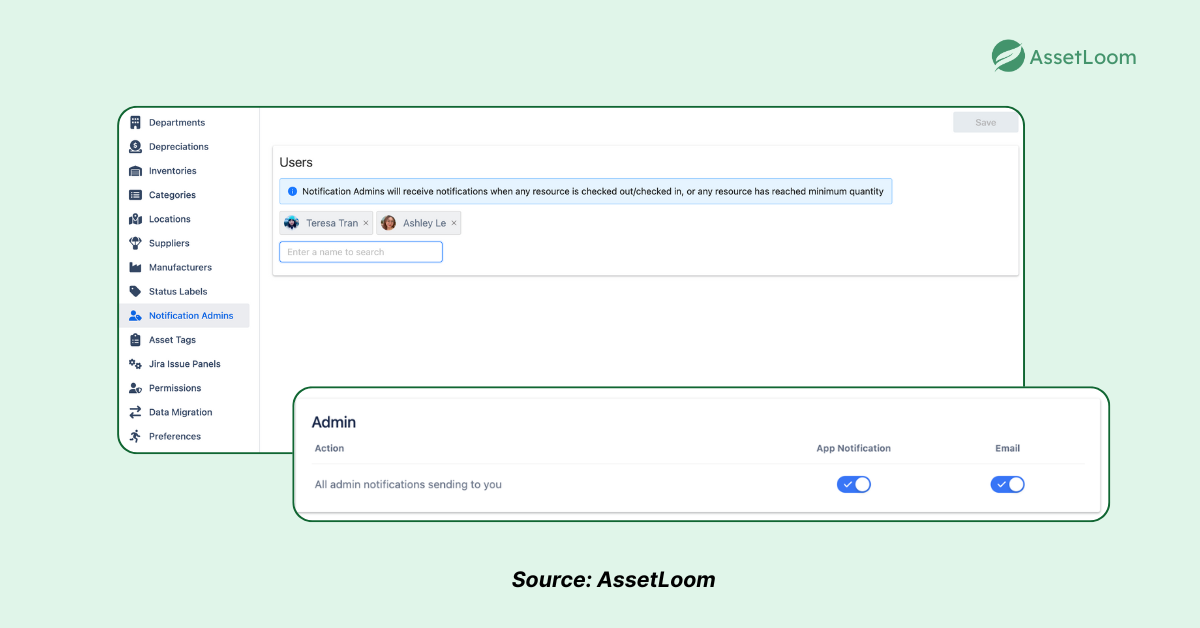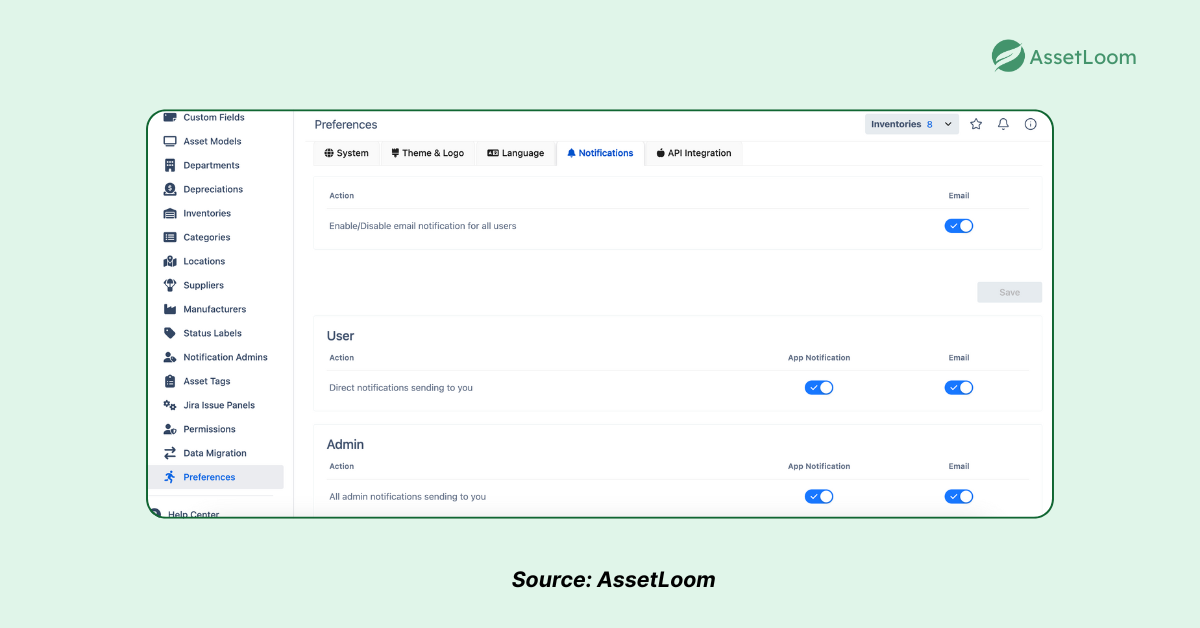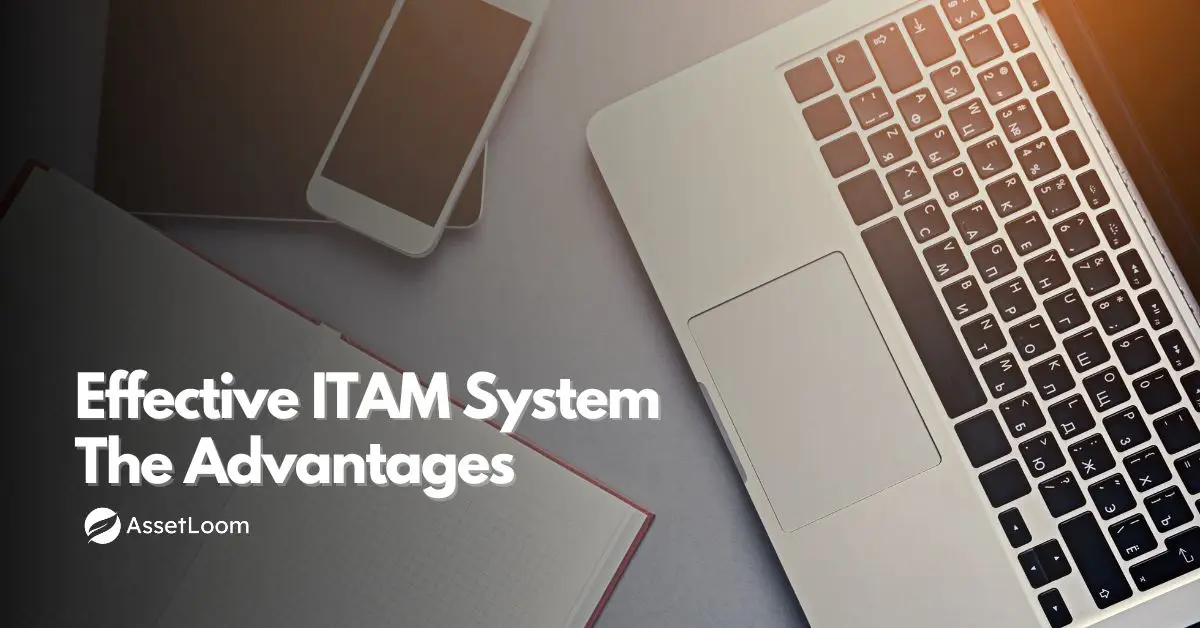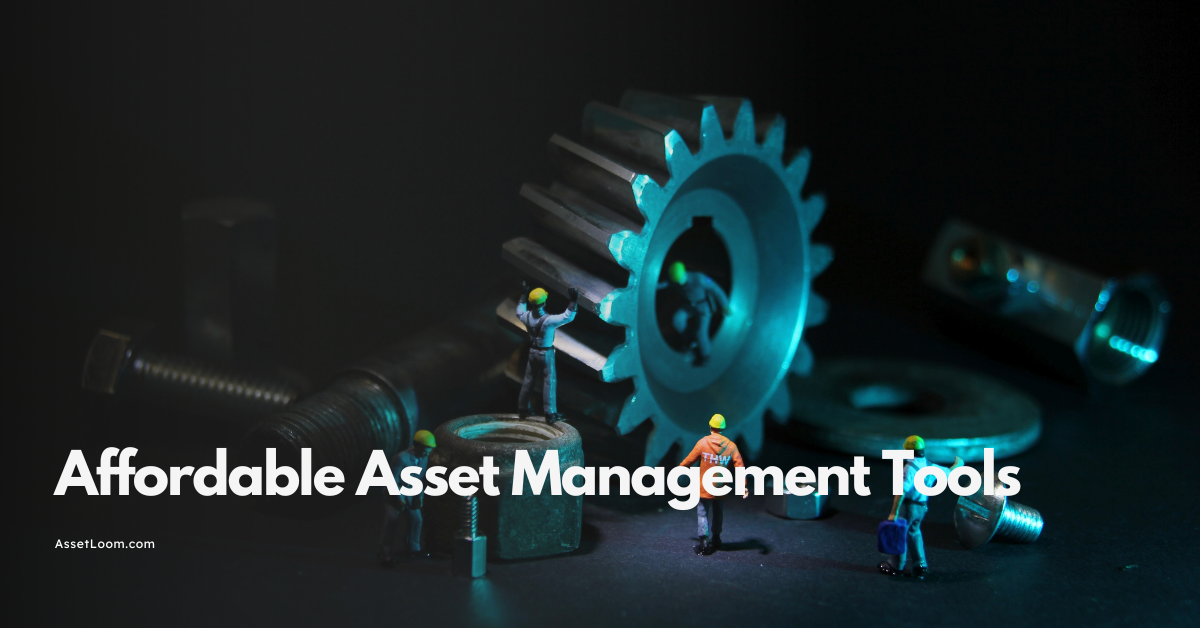How to Set Up Alerts for Asset Warranties and Renewals
How to set up simple alerts for asset warranties, licenses, and inventory to reduce downtime, avoid surprise costs, and keep your IT team proactive.
It’s easy to overlook warranty expirations or license renewals until a device fails or software stops working. Then it becomes a problem. When these details slip through the cracks, IT teams end up dealing with avoidable downtime, surprise costs, and frustrated users. Often, it could have been prevented with a simple alert.
Setting up alerts is a quick way to stay ahead of these issues. It helps you plan replacements, manage renewals, and reduce support tickets without adding more to your plate.
In this post, we’ll walk through the alerts that matter most, how to manage them using asset management tools like AssetLoom, and best practices to keep your team in control.
Let’s start with why these alerts make such a difference.
Why Alerts Aren’t Just “Nice to Have”
Most IT teams are already stretched thin. When something breaks or goes offline, the last thing anyone wants to hear is, “We missed the warranty window.”
Unfortunately, this happens more often than it should.
Without proper alerts in place, key dates like warranty expirations, license renewals, or low inventory levels pass by unnoticed. The result? More reactive work, more service requests, and more pressure on your team.
Setting up alerts helps you:
- Act before a warranty expires, not after
- Schedule renewals on time instead of rushing last minute
- Replace or restock equipment before it becomes a problem
- Avoid extra costs from emergency purchases or support calls
For example, imagine getting a simple reminder that 10 laptops are nearing the end of their warranties next month. That gives you time to review usage, plan a replacement, or extend coverage long before users start submitting tickets.
Alerts do not need to be complicated or overwhelming. When set up correctly, they give you just enough time and information to take action before a small issue turns into a big one.
What Alerts You Actually Need
There’s no shortage of things you could track. But not everything needs an alert. The best approach is to focus on the events that affect performance, cost, or availability and to make sure the right people are notified at the right time.
Here are the most important types of alerts to set up across your assets, software, and inventory.
1. Warranty Expiration Alerts
Warranties usually cover repairs or replacements at no cost. Once the warranty expires, even a minor issue can lead to unexpected expenses or delays.
A simple alert 60 days before expiration gives you time to review whether the asset is still in active use, check performance history, and plan for a renewal or replacement if needed. Follow-up alerts at 30 and 7 days help make sure nothing gets missed.
Tip: Include asset name, serial number, purchase date, and vendor contact info in the alert so it’s easy to take next steps.
2. License Renewal Alerts
If antivirus, endpoint protection, productivity tools, or any other software license lapses, you may lose access or leave your systems unprotected. This is especially critical for compliance in regulated industries.
A 30-day heads up is usually enough to allow for approvals and payments. These alerts should include the software name, number of seats or users, renewal cost, and the name of the person or team responsible for managing the license.
=> The Importance of Software License Management for Businesses
3. Minimum Quantity Alerts (Accessories, Consumables, Components)
Running out of high-demand items like power cords, toner, adapters, or spare keyboards slows down teams and clutters the help desk with simple but urgent requests.
It’s easy to run out of these without noticing until someone needs one and there’s none left. Alerts should trigger automatically when stock falls below your set threshold. Include the item name, current quantity, and reorder information to make it easy to take action right away.
4. Overdue Return Alerts (Assets and Accessories)
Laptops, projectors, tablets, and other shared items are easy to lose track of if returns aren’t monitored. These alerts help keep asset check-outs accountable.
These alerts should fire the day after an item was due back, and go to both the person who checked it out and their manager. Clear return details in the alert like the item name and due date help keep accountability simple.
5. Asset Booking Alerts
Shared equipment, meeting rooms, or temporary use devices often require booking and approval. Without alerts, requests sit unapproved and users are left waiting.
When someone submits a booking request, the person responsible for approvals should get an alert right away. If approval hasn’t happened within a certain timeframe, a follow-up alert keeps things moving. These notifications should show who made the request, what asset was booked, and when it’s needed, so decisions can be made quickly.
In some environments, it’s also worth setting up alerts for compliance or maintenance events. For example, you might want reminders when certain assets are due for annual inspections or recurring service. While not every team needs this, industries like healthcare, education, and manufacturing often rely on alerts like these to stay audit-ready.
Each of these alerts helps your team work proactively. Instead of reacting to problems as they come, you’re prepared ahead of time. The key is to focus on the alerts that matter most to your environment and make sure they’re sent to the right people, with the right information.
Setting Up Alerts with AssetLoom
With suitable asset management tool like AssetLoom, setting up alerts is quick and flexible. You don’t need a complex workflow or deep configuration just a few simple steps to make sure your team gets notified when it matters most.
Here’s how to do it:
1. Add Key Dates and Thresholds to Your Resources
Start by making sure your assets, licenses, accessories, and consumables have the right details filled in. These fields power the alerts.
- For assets and licenses: add warranty or expiration dates
- For inventory items: set minimum quantity thresholds
- For bookings: define approval timelines and return dates
You can enter this data manually or import it in bulk if you're updating multiple items at once.
2. Set Notification Admins

Notification Admins are the people who will receive alerts about key events. You can choose who should be notified when something changes, like:
- An asset or accessory is checked out or returned
- Stock drops below minimum levels
- A license is nearing expiration
- A booking is overdue for approval
To manage Notification Admins:
- Go to the Notification Admins section in your settings
- Add or remove users based on their responsibilities
- Changes take effect immediately
This ensures that the right people not the whole team are notified.
3. Enable and Customize Notifications

From the main settings area:
- Go to Settings > Preferences
- Select the Notifications tab
- Toggle alerts on or off for the events that matter to your team
Here are some of the notification types available in AssetLoom:
Asset and License Activity:
- Item is checked out or checked in
- License is about to expire
- Asset is overdue for return
Inventory Alerts:
- Accessory, consumable, or component has reached its minimum quantity
Bookings:
- A booking request is submitted
- A booking is overdue for approval
- A booking is approved or declined
Custody Verification:
- A custody check has been requested
These settings allow you to fine-tune who gets notified, when, and about what. You can avoid over-notifying your team while still covering the events that impact daily operations.
4. Choose How You Want to Be Notified
AssetLoom supports flexible delivery methods:
- In-app notifications for real-time updates while using the platform
- Email notifications for easy access and follow-up
- Slack notifications if your team uses Slack for communication
Each user can choose their own preferences under their personal settings. This helps ensure that alerts are actually seen and acted on.
5. Monitor Activity Using Dashboards and Reports
After your alerts are active, AssetLoom’s dashboards make it easy to stay ahead:
- View upcoming warranty and license expirations
- Track overdue bookings or returns
- See inventory items nearing minimum thresholds
You can export this data for meetings, audits, or vendor discussions, so nothing gets missed.
Setting up alerts in AssetLoom doesn’t take much time, but it saves a lot in the long run. You can reduce service tickets, avoid expiration surprises, and make smarter purchasing decisions all with a few simple notifications.
=> Top 10 Automated IT Asset Management Tools in 2025
Best Practices for Making Alerts Work
Keep your alerts useful, not overwhelming. Here are five simple ways to make sure they help your team stay ahead:
- Review alerts regularly: Set time once a month to check upcoming expirations and overdue items. Quick reviews prevent last-minute scrambles.
- Use a simple checklist: When an alert comes in, check: Is this still in use? Does it need renewal or replacement? Who approves it?
- Keep recipients updated: Make sure alerts go to the right people. Update Notification Admins if roles change.
- Plan ahead with reports: Use alert data to forecast renewals, replacements, and budget needs.
- Avoid alert fatigue: Focus on critical assets and licenses. Start small, and fine-tune over time.
Conclusion
Missed warranties, expired licenses, and low inventory are all preventable problems. With just a few well-placed alerts, your team can stay ahead of deadlines, reduce surprise costs, and avoid unnecessary service tickets.
You don’t need a complicated system or a major process overhaul. A few smart alerts, set up in the right asset management tool, can make a real difference.
Start with what matters most. Set one alert. Test it. Build from there.
With AssetLoom,you can take a moment to explore the alert and notification features. They're designed to help your team stay informed without adding noise.

Subscribe for Expert Tips and Updates
Receive the latest news from AssetLoom. right in your inbox


